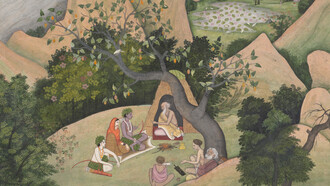Paradoxes are fascinating logical or conceptual puzzles that often involve conflicting ideas or situations. They challenge our intuition and conventional wisdom, forcing us to think deeply and reconsider our assumptions. Here are a few examples of paradoxes:
The Bootstrap Paradox: Imagine you discover a book with detailed instructions on how to build a time machine. You follow the instructions and build the time machine, but then you realize that the book you found was actually written by yourself in the future. Where did the information in the book originate?
The Liar Paradox: "This statement is false." If the statement is true, then it must be false. But if it's false, then it must be true.
The Paradox of Achilles and the Tortoise is a classic philosophical paradox that explores the concept of motion and infinite divisibility. It goes as follows:
Achilles, a swift runner, decides to race against a tortoise. However, to make it fair, Achilles gives the tortoise a head start of, let's say, 10 meters. The paradox arises when considering how Achilles can catch up to the tortoise.
By the time Achilles reaches the spot where the tortoise started, the tortoise has moved forward a certain distance, let's say 1 meter. Achilles then reaches this new spot, but the tortoise has moved again, albeit a shorter distance. This process continues ad infinitum, with the tortoise always moving forward a smaller distance each time Achilles reaches its previous position.
According to the paradox, Achilles will always be chasing the tortoise, but he will never actually surpass it. This is because Achilles must always cover the distance the tortoise has already moved, albeit in smaller and smaller increments, which seemingly leads to an infinite number of steps Achilles needs to take to reach the tortoise.
The paradox challenges our intuition about motion and suggests that infinite divisibility and continuous movement can lead to paradoxical situations. In reality, however, this paradox is resolved through the concept of limits in mathematics. As the distances Achilles needs to cover become infinitesimally small, he can eventually catch up to the tortoise within a finite number of steps.
Paradoxes are interdependent, persistent contradictions that lurk within our presenting dilemmas. Diving into a dilemma and exploring the options at a deeper level, we find opposing forces interlocked in a circular ebb and flow. Paradoxes may seem absurd at first as they integrate contradictions, yet a more thorough investigation can unveil a logic to the holistic synergies of competing demands.
(Both/And Thinking: Embracing Creative Tensions To Solve Your Toughest Problems, Wendy K. Smith and Marianne W. Lewis)
Applying the concepts of collaboration, collective intelligence, and continuous learning, you can problem-solve by teaming and learning innovatively.
Teaming involves bringing together individuals with diverse skills, perspectives, and expertise to work toward a common goal. Collaborating in teams allows for the exchange of ideas, pooling knowledge, and leveraging each other's strengths.
When teams effectively collaborate, they can tap into the concept of collective intelligence. This means that the group as a whole can generate ideas, solve problems, and make decisions that surpass the capabilities of any individual member.
Learning is a vital component of teaming. Effective teams foster a culture of continuous learning, where members are encouraged to share their knowledge, learn from each other, and develop new skills. This enables the team to adapt to new challenges and stay ahead of the curve.
Out-of-the-box Thinking allows you to break free from conventional thinking patterns and explore unconventional solutions. By thinking beyond the obvious, you can uncover unique perspectives and approaches that may lead to breakthrough solutions.
When faced with a difficult puzzle, it's important to engage in both divergent and convergent thinking. Divergent thinking involves generating a wide range of ideas and possibilities, while convergent thinking involves evaluating and selecting the most promising options.
In the book Both/And Thinking, the authors say;
Consider the paradox between focusing on ourselves and focusing on others. The healthier we are, the more effectively we can engage with and support others. The more we are supported by others, the healthier we are. Similarly, organizations with a strong centralized core can better empower distinct decentralized units and vice versa. These competing demands reinforce one another.
Creativity can be enhanced by using visual tools such as mind maps or diagrams. These techniques help to organize information, identify patterns, and stimulate new connections between different elements of the puzzle. Creativity often thrives in an iterative process.
Rather than trying to find the perfect solution right away, it can be beneficial to generate multiple ideas, test them, learn from the results, and refine your approach. This allows for flexibility and adaptation as you gain a deeper understanding of the puzzle.
Remember, creativity is a skill that can be developed through practice and exploration. By embracing a creative mindset, you can enhance your problem-solving abilities and find innovative solutions to difficult puzzles, such as using tension to unravel a paradox.















